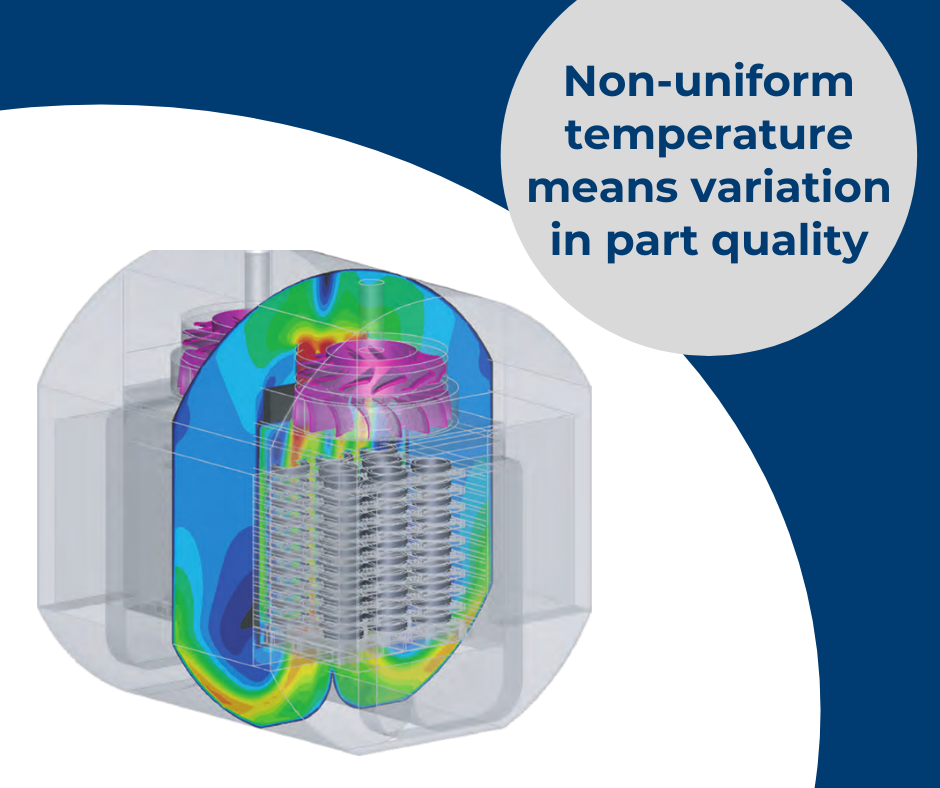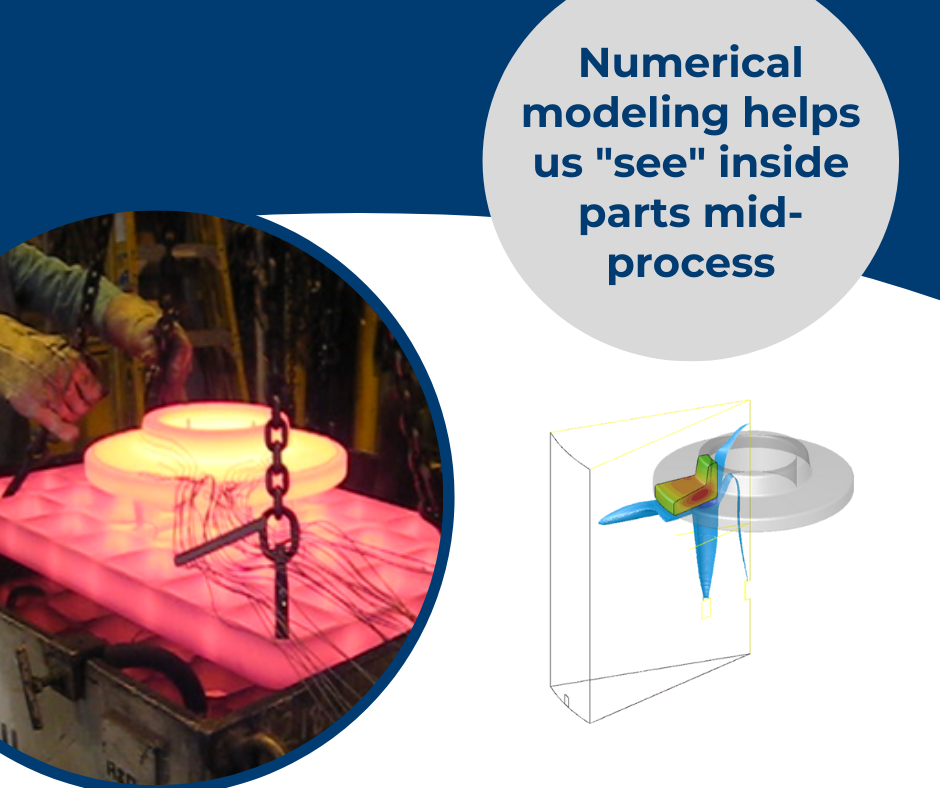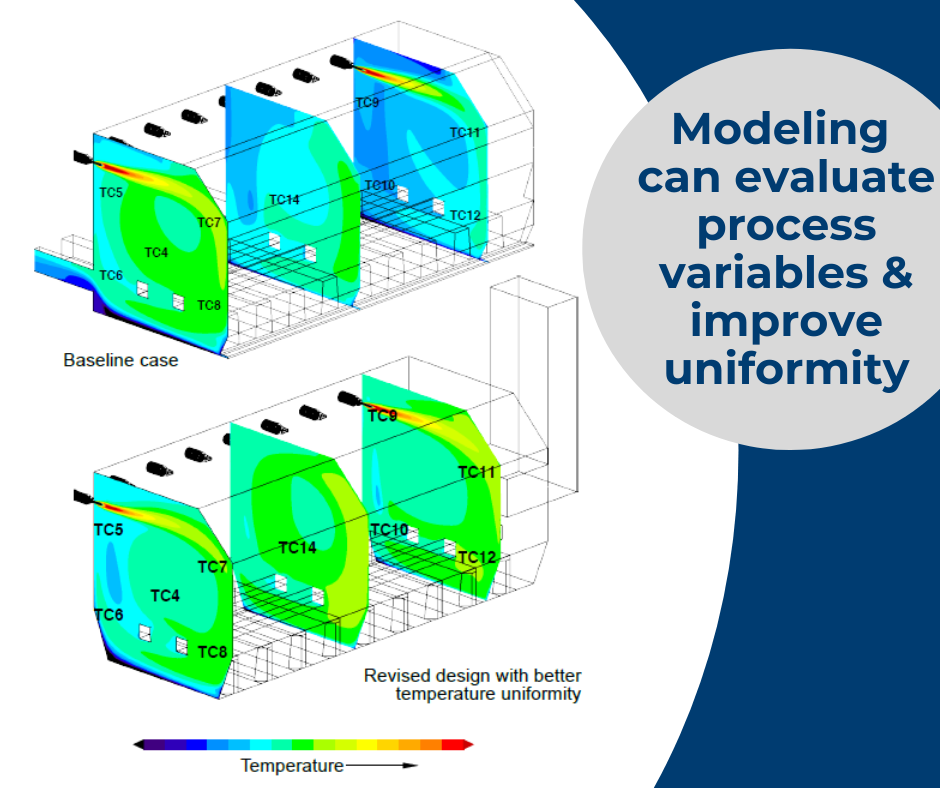Heat Treatment Problems Are Flow Problems
By Kelly Hile
In heat treatment processes, a metal is heated and cooled in a series of steps designed to give the material a unique set of properties. Although the primary focus is on the component undergoing heat treatment, most of the problems that arise are really a result of what’s around the component. The gases that circulate a furnace, the liquid that cools in a quench tank – these are the fluids that provide the most important commodity: heat transfer.
As experts in fluid dynamics, flow patterns, and thermodynamics, we know that what goes on outside the component is the only thing dictating the temperature inside. By studying the flow patterns involved in heat treatment steps, we can help you achieve uniform product results that meet specifications the first time and every time.

One of the unique challenges in heat treatment is that the internal temperatures of the metal itself are difficult to measure mid-process. At Airflow Sciences, we have highly accurate and cost-effective ways to predict these temperatures through numerical modeling. While arduous testing may yield some data about internal temperature, a model gives us a complete, three-dimensional temperature distribution inside the part – at a better price point.

We can apply fluid modeling techniques to not only the part itself but to all the fluid around it.

Numerical modeling makes it possible to see how process parameters are affecting the heating and cooling of products in real time, and we can even model new ideas for improving the process. We can evaluate the effects of a new agitator, a lower quench temperature, or a different racking arrangement, all before you make any capital investments. Through modeling, you can reduce rework, improve uniformity, and significantly reduce the time spent on physical trials.
Contact us to learn more about using modeling in heat treatment applications.
Learn more :
